| Umělec 2002/4 >> Legenda of Magda | Просмотр всех номеров | ||||||||||||
|
|||||||||||||
Legenda of MagdaUmělec 2002/401.04.2002 Ivan Mečl | artist | en cs |
|||||||||||||
|
“Perceiving oneself as superior and exceptional sometimes extends into distorted perception, into sickness. And the sick pilgrim wanders downward towards the treasure.”
A little poetic defense for the introduction After visiting artists — for which I usually take along a partner — it often happens that on the way back he or she cannot help blurting out: “I have nothing to do with it, but this is beyond my understanding. This makes no sense to me. Who’s going to be interested in this? This is not even art!” Only a topic for an embarrassing debate, or a possibility to turn the conversation somewhere else. In the beginning the only answers that came to mind were variations on Nietzche’s “What is good, nobody can know, only the one who creates.” Certainly ruthless towards the viewer, but what can you expect from such a brute. But sometimes it happens that a personality appears whose work is not understandable, even to others who create. Contemporary art, though at first glance it may appear otherwise, has its clear but unspoken criteria. Criteria not taught in schools but we can find them in allegory in magazines of contemporary art or in the secret debates of curators. A web of style creates them. It is a web whose points of contact are constantly changing shape so that the same thing never gets caught twice. If we want to have work caught by this web, it is necessary to observe the rules of change or to be endowed with supernatural sensitivity. After a long and exhausting time of being eroded by different variants, the web and its structure is extremely insidious and slippery. Of course I do not mean to suggest that this requires that the contemporary artist have the same characteristics. From time to time it is good to look around among all the refuse tumbling around under the web to see if this work really has deserved to go unnoticed. If we do not understand something, or do not see it directly, this does not necessarily mean that it is bad, nor does it mean that it does not exist. The best example is love, which we do not understand; yet it seem beautiful to us. Or the hunger that you cannot see, but you know a lot can be put into it so you fill it up with boxes and paper bags. A miraculous machine, whose wonders we no longer perceive. And because we do not think about them we are not consciously directed by its principle and so we are unable to see similar phenomena. All capable villain “When I was a child, I wanted to be a stunt man… When I was fifteen, I ran away from home and played the mouth-organ in France on street corners and charged money for it… Yeah, and about two years ago I took my accordion on tour through retirement homes. Now that was more interesting….” In the past, the label “Renaissance man” was used to designate the multitalented man with many abilities and skills. Nowadays after twenty years of life if this person does not begin to specialize in a specific, socially acceptable activity, society begins to fret. Usually these are attempts to suggest that he or she will never achieve very much and will become an unrespected ungrounded figure. Everything that Pavel Magda Pražák is not; and what is he not doing? He is not at the right time and the right place; he does not know what is necessary and he does not despise anything, has no shame and was never in the military. Simply a good friend. But what he does, it horrifies you. In the last five years he has mounted an avalanche of activity, and so we can soon expect a flood of his lovingly perverse morality. His actions are undoubtedly the most important. More or less photo-documented, they are based on the strong personal experience of the artist and fusion with the concept. He does not behave like an artist, but instead morphs into the role he has given himself. He scouts out the landscape, is homeless and animal. And he is a thing. He always wanted to become a musician. He plays the accordion and now he’s learning the violin. His most famous event was his tour through the retirement homes, which was covered in the media. When he applies himself to art in its classical forms he chooses drawing and watercolor. Besides his so-called primeval drawings and primeval sexual symbols sketched in naive lines, his most interesting project is the comic book story of Bear and Shluk and the book Cuntbeard’s Word O’ Grams. Bear and Shluk are the seemingly rather simple and vulgar heroes of embarrassing stories. Yet lovers of this genre are always surprised by the sophisticated metaphysical conclusions. The ripeness of the vulgarity and fecal humor is a guise for the books’ almost cabalistic mysteries. “Vulgarisms are for me irreplaceable and unique material for putting together a composition. After publishing Cuntbeard’s Word O’ Grams, I observed the reactions of people with astonishment. I thought that these fast girls in one night bar would have a good laugh over the crosswords but in the end a fight almost broke out. Likewise I was surprised when these pretty unconventional guys, skaters, threw the crosswords away, saying that it was ‘smut.’ Even more I was pleasantly surprised by the reaction of these intelligent men from the Supreme Court in Brno, who were happy to sponsor me for the crosswords by buying me dinner and drinks in a restaurant with the promise of other gifts. Vulgarity is part of the human language, in the same way as different musical instruments in a symphonic orchestra. I understand someone may not like the kettle-drums.” Nor is he very far from literature. He writes stories inspired by dreams, records of actions and fairytales. In the stories a dream is not an illusion, but a reality in itself. During the description of the action the reader frequently hesitates, wondering whether he has stepped beyond the boundary of wakefulness. In everything Pražák does, he endeavors not to perceive any limits to reality, or to the possibilities, to move them, out step them. “I have the feeling that in dreams I live through more important things then when awake. It happens to me that the feeling of wasting a day is relieved by a truly exceptional and alive dream that leaves visible traces in me even after I wake up.” Besides his own works he has also created on the internet Gallery Magda.1 Originally conceived as a completely open platform for young art, it now has much tighter curator leadership and it is possible to find there truly fresh talents, including in 2002 paintings by Věra Kotlářová. At present there are several dozens artists in the internet archive. While experimenting with the internet, he created a funeral2 and obstatric3 guidepost. The idea, which came from being bored one day, has resulted in a vast system of references to all the standard and alternative forms of arriving and departing from the world. I was astonished by the sheer volume of the web presentations of these commodities. Starting with simple web pages, and continuing with photo documentation and maps of graveyards to videos of alternative births. And that all under one umbrella. Searching for other worlds “About four years ago I went outside town into the hills, where I dug a hole in the forest with the intention of being there at least the whole weekend. It was also connected with my feeling that I should ‘go and bury myself somewhere.’ Once I was sitting in the hole, darkness began to fall, I remembered that since my childhood I was afraid to sleep in the forest at night. Everything that happened then in that short span of time is impossible to describe. The important thing is that I forever got rid of the fear, and in this way I overcame the border that separated me from having a more intimate relationship with nature. For the first time I felt the consoling feeling of being an animal that is protected by the forest.” Pavel Pražák first called attention to himself with the visualization of a long internet action that resulted from a collective project with Thai artist Roarbeer Suwannaphongg and Japanese critic Keiko Sei, who was then living in the Czech republic. The idea was to bring to life vicarious identities and their lies first taken from e-chat conversations. As a source for this, the chat “nick” MrtvejPavouk (DeadSpider) was used, who turned out to be Pražák. For the project he chose to dress up as a Gestapo officer, an infant, housewife and a young girl longing for a gypsy lover.4 In 1998 for the project End of the World he discovered for the first time the motif of border or boundary. The crawling hero at the end of the world, which is being watched over by unyielding guards. Cunts. Gates that lead to the world. Back behind them, however, is nothing. But this is a long time ago and the hero searching for treasure outside this world never gives up. After several years the year 2000 arrives and with it the action Sewer, another well-known project that has already landed a firm place in Pražák’s imaginary journey in search of boundaries. “In the end everything is related to the ‘gate,’ ‘border.’ I observe the signs, hidden meanings and connections that come to me, and from them I create a treasure map on an abandoned island. I know that after attaining the next point, it reveals to me a new horizon that up till then I had not recognized. Actions like Sewer for me have a ritualistic meaning, through whose struggle I attain more experience and signs, meanings and abilities. These I need for the next journey for treasure.” As for the hero’s solitude, we can only read about the action from his notes, but thanks to Pražák’s literary talent it is an impressive story. According to testimony by the occasional guard who was there to watch over the physical and psychological health of the new citizens of the sewer, there is no question it really happened. The artist entered the sewer and experienced not only physical suffering from the perceived changes in temperature, time, and space, aural and optical illusions, but he also had to deal with new perceptions of himself and his position in the world above him. “I felt that something important would happen up there, that something was waiting for me. The sewer I perceived subconsciously. It’s difficult to imagine that under the city there is another city, just as vast, in which things are moving that humans have eliminated from their world. By that I don’t only mean the garbage and excrement. Every possible hidden thing that doesn’t belong in light of day is moving around down there. Whatever is taking place inside a person, creates a rumble. Therefore I entered the sewer and inside myself somewhere at the same time and things to which I shouldn’t have access outside began to rise to the surface. I was in the sewer several times, sometimes I even took others with me. One girl told me with fear in her eyes that lost souls are lurking in the sewer. For instance, people who died under evil circumstances. In the end we never went in together. She completely froze at the entrance.” In 2001 the projects Ambush and Activating Function of Horizontal Position for Sublimation of the Mind into Planet Consciousness are created. The action during which the artist enters the world of garbage and plays a role equal to it. He identifies with the unwanted, discarded, and unclean, onto which people only pile up other waste and triviality produced by their life consumption. He is the contemptuous thing that, at best, is in the way, a thing necessary to get rid of, kick away and spit on in revulsion. A huge world living its own sincere life, left in the intimacy by contempt. “I asked people for a favor, if they could step or spit on me, to treat me like garbage, but naturally people were afraid. This kind of favor freaked people out. It was about a kind of shift in my individuality, which, according to my ‘calculation’ caused feelings of fear, anxiety and grasping. I wanted to unite with filth, the unsubstantial, the worthless, especially in confrontation with people.” Now Pražák is preparing another collective project. It will be a “cabaret of literature” whose parts will also be published as an internet novel by several authors,5 the pieces of the never-performed musical Pursuit of the Syphilic, notes and lyrics of songs. Notes: 1. www.galeriemagda.cz 2. www.galeriemagda.cz/funus/funus.html 3. www.galeriemagda.cz/porod/porod.html 4. For full documentation of the project see Umělci 2/2000 5. www.galeriemagda.cz/roman
01.04.2002
Рекомендуемые статьи
|
|||||||||||||
|
04.02.2020 10:17
Letošní 50. ročník Art Basel přilákal celkem 93 000 návštěvníků a sběratelů z 80 zemí světa. 290 prémiových galerií představilo umělecká díla od počátku 20. století až po současnost. Hlavní sektor přehlídky, tradičně v prvním patře výstavního prostoru, představil 232 předních galerií z celého světa nabízející umění nejvyšší kvality. Veletrh ukázal vzestupný trend prodeje prostřednictvím galerií jak soukromým sbírkám, tak i institucím. Kromě hlavního veletrhu stály za návštěvu i ty přidružené: Volta, Liste a Photo Basel, k tomu doprovodné programy a výstavy v místních institucích, které kvalitou daleko přesahují hranice města tj. Kunsthalle Basel, Kunstmuseum, Tinguely muzeum nebo Fondation Beyeler.
|





















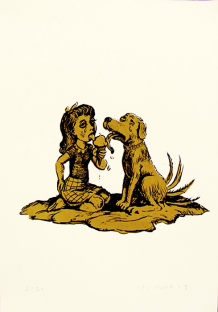




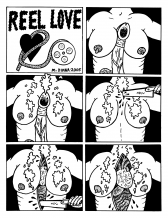
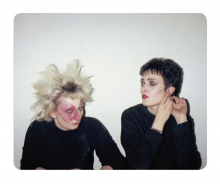
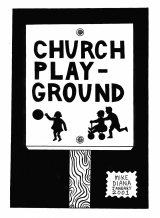
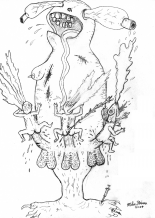


 We Are Rising National Gallery For You! Go to Kyjov by Krásná Lípa no.37.
We Are Rising National Gallery For You! Go to Kyjov by Krásná Lípa no.37.
Комментарии
Статья не была прокомментированаДобавить новый комментарий